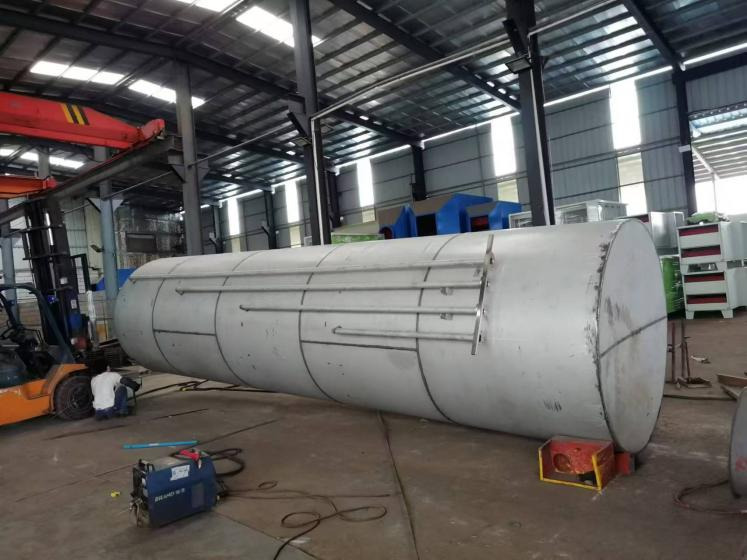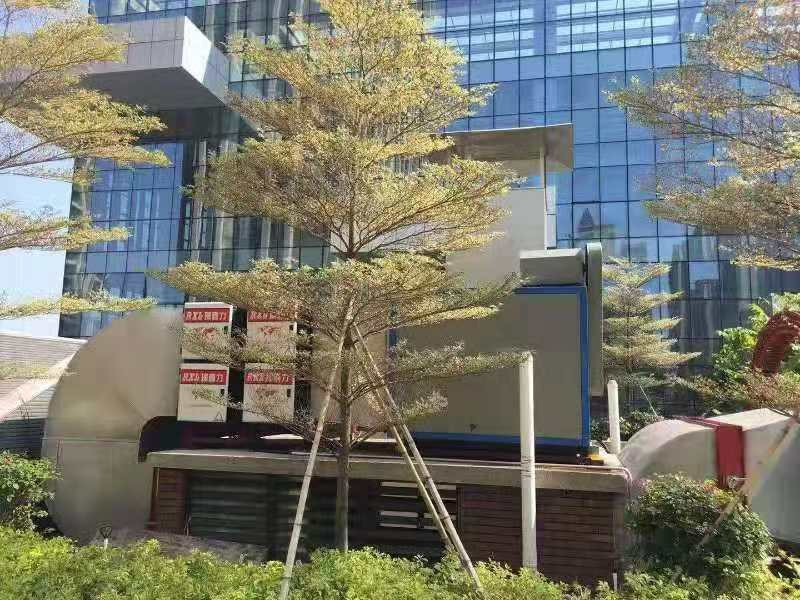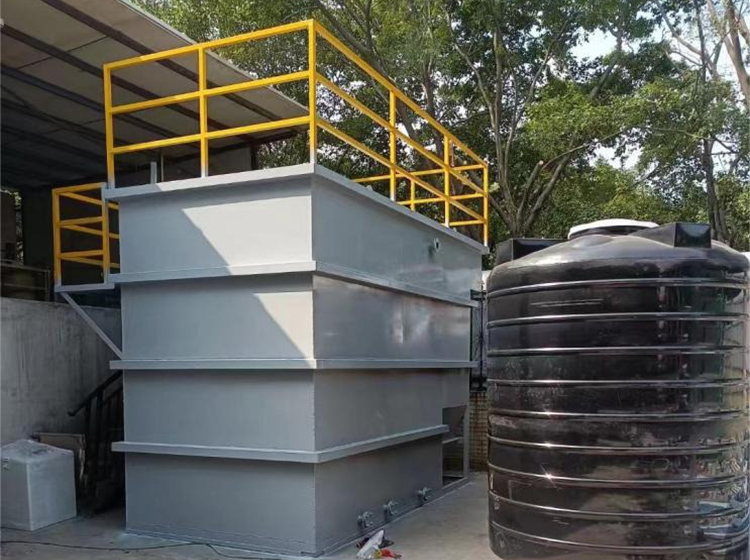Four major industrial waste gas treatment methods
Waste gas pollution is one of the most prominent environmental problems worldwide, and its main source of pollutants is industrial waste gas. Due to different production processes, industrial waste gas produces different types of pollutants, and different treatment processes should be adopted for different types of pollutants.
1. Organic waste gas
1) Main sources: Various organic waste gases are generated in industrial production, mainly including hydrocarbons, alcohols, aldehydes, acids, ketones, and amines. These exhaust gases come from a wide range of sources, including emissions from petrochemical and organic synthesis reaction equipment in the chemical industry, organic solvents in printing ink in the printing industry, odors from mechanical spray painting and metal products in the mechanical industry, emissions from spray painting and drying furnace casting production equipment in the automotive industry, and emissions from spray painting equipment in hardware and furniture factories.
2) The hazards of organic waste gas: In production, the emission of organic waste gas has always been a prominent problem, and the vast majority of organic waste gas is harmful to human health. If organic waste gas enters the human body through the respiratory tract and skin, it can cause temporary damage to the respiratory, blood, liver and other systems and organs, especially benzo [a] pyrene polycyclic aromatic hydrocarbons, which can directly cause cancer and harm human health.
Organic waste gas can also cause serious air pollution. After some organic matter enters the atmosphere, it forms photochemical smog under certain conditions, causing secondary pollution; After some organic matter enters the stratosphere, it undergoes photochemical reactions with ozone under ultraviolet radiation, causing the ozone hole; Some organic compounds have a dual nature of odor pollution and harmful gases; Some organic compounds can also cause greenhouse effect.
3) Waste gas treatment methods:
a. Water film dust removal+activated carbon adsorption method;
b. Dry filtration dust removal+activated carbon adsorption method
c. Activated carbon adsorption+catalytic combustion method;
2. Acid mist exhaust gas
1) Main sources: Acid and alkaline waste gases emitted during the processes of chemical, electronic, metallurgical, electroplating, textile (chemical fiber), food, machinery manufacturing and other industries, such as seasoning food, acid production, acid washing, electroplating, electrolysis, batteries, etc.
2) The hazards of acid mist exhaust gas: The atmospheric pollution caused by acid mist gas causes significant harm to human health, especially to on-site operators, crops near factories, and soil. The direct damage and indirect impact are often immeasurable in terms of money.
3) Waste gas treatment method: water film packed tower+alkali (acid) liquid absorption
3. Furnace exhaust gas, black smoke from power generation
1) Main sources: Metal dust particles generated during the metal melting process by furnace equipment in the hardware, die-casting, and casting industries, harmful gases such as SO2 and NOX generated during the combustion of diesel (heavy oil), and exhaust gases generated during the combustion of diesel (heavy oil) by generators.
2) The hazards of furnace exhaust gas and generator black smoke: Furnace exhaust gas and generator black smoke are the main causes of acid rain, causing significant air pollution, especially direct damage and indirect effects on on-site operators, crops near factories, and soil.
3) Governance method: Swirling water washing spray method+alkaline solution absorption
For the exhaust gas from the furnace and the black smoke from the generator set, the current conventional method is to use a swirl plate water washing spray method, using a swirl plate spray tower. The gas moves at high speed from bottom to top inside the tower and comes into contact with the washing liquid sprayed from top to bottom. Due to the multiple layers of swirl plates installed inside the tower, it can increase the gas-liquid contact area and contact time, allowing the exhaust gas to fully contact water inside the tower and on the plate surface. The pollutant carbon black in the exhaust gas is fully adsorbed by the water during contact with the spray water, and can be purified; Gaseous pollutants such as NOx and SO2 in exhaust gas are treated by adding a certain proportion of NaOH to the spray water to make it alkaline. During the spray process, a chemical reaction occurs when the water comes into contact with the exhaust gas, neutralizing the gaseous pollutants such as NOx and SO2 to achieve good treatment effects.
4. Kitchen fumes and smoke
1) Main source: Oil fume is a gas molecule produced by various types of manufacturers during kitchen cooking. Fire smoke is a harmful gas emitted by a stove during complete or incomplete combustion. It is mainly composed of free charcoal and black smoke, which is flocculent and easy to adhere to solid substances. The rest are COX, SO2, NOX, and belong to high concentration smoke gas
2) The hazards of kitchen fumes and fire smoke: Kitchen fumes contain many substances that are seriously harmful to the human body and can increase the risk of lung cancer. Kitchen smoke is also one of the main air pollutants. The gas is acidic and easily forms acid when it comes into contact with water, which can pollute water flow, soil, and corrode buildings.
3) Governance methods:
A. Oil fume
a. Filter adsorption oil fume purification: The filter adsorption oil fume purification equipment can use organic polymer composite materials with high oil absorption performance, such as fabrics or felt, and inorganic filter materials (hydrophobic perlite, ceramic particles, coke, etc. used alone or in combination). The filter materials can be placed perpendicular or parallel to the direction of smoke flow, and the purification efficiency needs to be above 80%.
b. Electrostatic oil fume purification: The electrostatic deposition method is to introduce oil fume into a high-voltage electric field, so that the particles in the oil fume and fire fume are charged, and under the action of the electric field force, they move towards the dust collection electrode and deposit. The purification efficiency can usually reach over 85%, with a small pressure drop.
c. Low temperature plasma method: Its principle is to use high-voltage electrostatic method while setting up a plasma field at the front end of the electrostatic field, and using the large amount of free radicals excited by its high energy to degrade the oil fume particles, reducing their viscosity; In the process of plasma generation, the instantaneous high energy generated by high-frequency discharge can open the chemical bonds of some harmful gases, causing them to decompose into elemental atoms or harmless molecules. This technology is currently the most advanced oil fume and fire smoke treatment technology on the market, with a high removal rate (below 90%), no odor in the treated gas, easy maintenance, but high equipment investment.
B. Fire smoke
The cyclone plate water washing spray method is used for high concentration kitchen smoke gas, using a cyclone plate spray tower. The gas moves at high speed from bottom to top inside the tower and comes into contact with the washing liquid sprayed from top to bottom. Due to the multiple layers of cyclone plates installed inside the tower, it can increase the gas-liquid contact area and contact time, allowing the exhaust gas to fully contact with water inside and on the surface of the tower. The pollutant carbon black in the exhaust gas is fully adsorbed by the water during contact with the spray water, and can be purified; Gaseous pollutants such as NOx and SO2 in exhaust gas are treated by adding a certain proportion of NaOH to the spray water to make it alkaline. During the spray process, a chemical reaction occurs when the water comes into contact with the exhaust gas, neutralizing the gaseous pollutants such as NOx and SO2 to achieve good treatment effects.
Previous: No More








